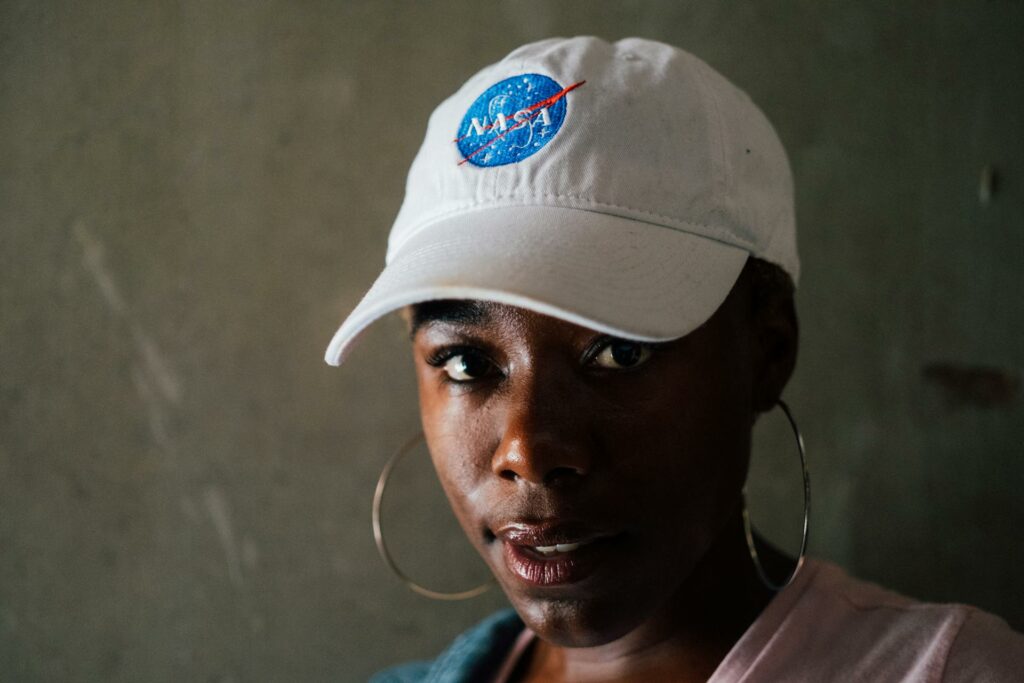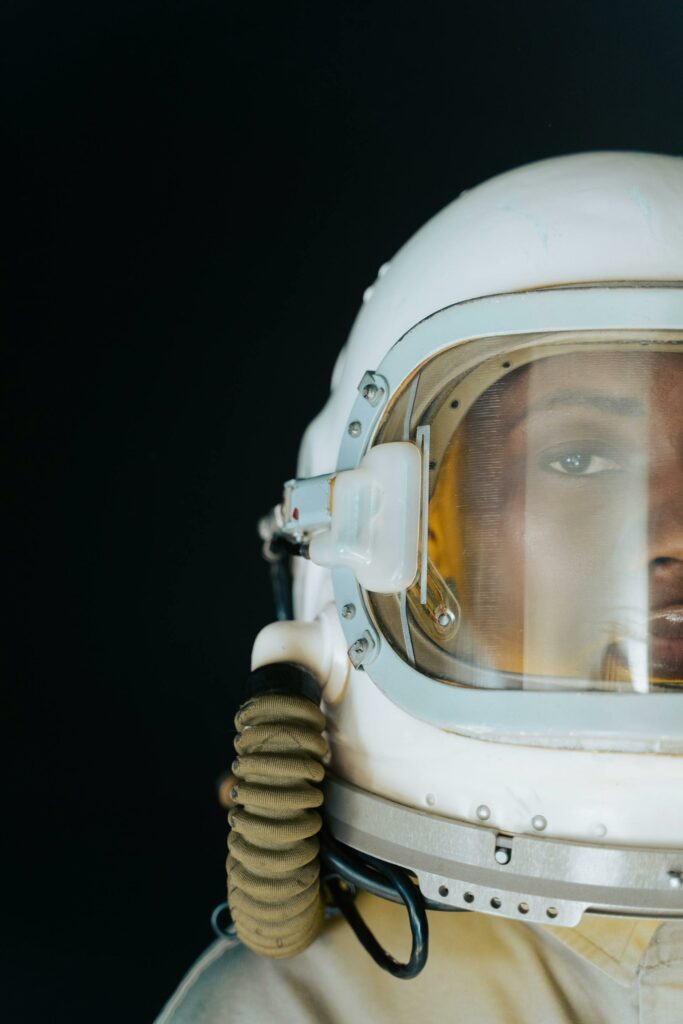The Legacy of Black Women in NASA: From Katherine Johnson to Aisha Bowe
For generations, Black women mathematicians and engineers quietly powered NASA’s most remarkable achievements—then reemerged into public view as cultural icons while inspiring a new generation of space pioneers. Their stories are inseparable from both the American space program and the broader arc of civil‑rights history.

Creola Katherine Johnson, born in 1918 in West Virginia, joined NACA (National Advisory Committee for Aeronautics) in 1953 as a “human computer” and would go on to calculate orbital trajectories for Project Mercury, including John Glenn’s historic orbit and the lunar rendezvous paths of Apollo 11. Her precision and brilliance earned her the Presidential Medal of Freedom (2015), and in 2017 NASA named its computational research center in her honor. Johnson remained a revered figure nationally until her passing in 2020 at age 101, her legacy now cemented in American space history.
But Johnson was one of many. Dorothy Vaughan began her career at Langley in 1949, later supervising the segregated “West Area Computers” pool—the first African-American woman at NASA to hold such a leadership role. She taught herself and her team FORTRAN programming as NASA transitioned to electronic computing. Vaughan’s elevation, formalized in the 1950s, paved a path for Black women coders long before they were recognized.
Mary Jackson also rose through Langley’s ranks. Initially a computer alongside Johnson and Vaughan, she became NASA’s first Black female engineer in 1958 after earning engineering credentials. After a distinguished technical career, Jackson accepted a managerial demotion in order to run NASA’s Federal Women’s and Affirmative Action Programs—where she tirelessly advocated for women and persons of color in STEM. In 2021, the NASA Headquarters in D.C. was renamed the Mary W. Jackson NASA Headquarters in tribute.
Christine Darden brought aerodynamic expertise to her work on sonic‑boom modeling. Starting in 1967, she spent decades at Langley researching supersonic flight, ultimately becoming the first African-American woman at Langley promoted to NASA’s Senior Executive Service and earning the Congressional Gold Medal in 2019.
These women’s biographies are stitched into the fabric of Hidden Figures, the 2016 book and film that illuminated their story. Their legacy spans not only technical artifacts—the computed orbit that returned Alan Shepard safely to Earth, the Apollo mission rendezvous coordinate, flight‑trajectory models—but also institutional transformation, breaking barriers of both race and gender in a segregated era.

A New Generation: Aisha Bowe and the All‑Female Spaceflight
Fast-forward to April 14, 2025. Blue Origin’s NS‑31 mission launched the first all-female suborbital flight since 1963, with six crew members including former NASA engineer and Bahamian‑American Aisha Bowe. They crossed the Kármán line into space for an 11‑minute journey; Bowe and Gayle King were among the first Black women to travel to space.
Bowe’s career path is mirrored in her mission’s symbolism. Once told by counselors to consider cosmetology, she turned to math and engineering—first at community college, then at University of Michigan, eventually joining NASA’s Ames Research Center. Serving in trajectory dynamics and air traffic research, she earned recognition for technical contributions and outreach via NASA’s MESA program mentoring STEM students.
When she flew suborbitally, Bowe carried symbols of her heritage: a Bahamas patch and the call sign “Exuma,” honoring her grandfather’s island birthplace. Her late father had expressed pride and hope for her journey prior to his passing.
But the flight wasn’t without controversy. Bowe faced waves of online hate laden with racism and sexism, intensified by political tensions surrounding Jeff Bezos, Blue Origin, and broader criticisms of privilege and elite space tourism. Yet she continues with her mission: normalize representation, inspire young girls, and challenge limiting labels.
Bowe now heads STEM Board, a tech consultancy company she cofounded, and is active in global STEM advocacy through educational programs and speaking engagements across the world. Recognized as STEM FOR HER Woman of the Year in 2024, she continues work to diversify aerospace and tech.
The Continuum: Connecting the Past and Present
The arc from Johnson, Vaughan, Jackson and Darden to Bowe illustrates both change and continuity. Early figures operated under segregation and systemic bias, often making invisible contributions without public recognition. More recent generations benefit from visibility—but also bear new burdens: media scrutiny, cultural symbolism, and high-stakes representation.

Johnson and her peers worked under layers of institutional discrimination, decoding complex trajectories by hand. Their resilience laid groundwork only later recognized when STEM and space programs began celebrating diversity. Their stories, partly buried for decades, are now studied, taught, dramatized—and rightly honored through medals, named centers, and public memory.
Bowe and her peers stand on that foundation. Their visibility is intentional: carrying student‑written dreams to space, publicly embracing identity and science, using corporate and civic platforms to advocate. They demand more than acknowledgment—they command opportunity.
Why Their Stories Matter
- Technical Excellence under Adversity Katherine Johnson calculated Mercury and Apollo mission trajectories with manual precision, Dorothy Vaughan taught programming to her colleagues, Mary Jackson became the first Black female engineer at NASA, and Christine Darden spearheaded high‑speed aerodynamics research. They did so when few expected them to do anything at all.
- Institutional Change and Advocacy Mary Jackson’s move into Equal Opportunity leadership at NASA, and Dorothy Vaughan’s FORTRAN skills boosting her whole team, show how Black women helped open doors for others—not spurred by tokenism but by action and advocacy inside the agency.
- The Power of Representation Hidden Figures’ popularity revived interest in these pioneers. Bowe’s flight with Blue Origin reshapes space exploration as inclusive, not exclusive. Seeing women of color travel to space matters—it gives tangible proof that space belongs to more than those historically privileged.
- A Role Model Pipeline Johnson and her colleagues shaped opportunities at NASA; Bowe mentors through the MESA program, carries global letters into space, and builds companies to support STEM education, especially for girls. Her dual identity as scientist and activist carries forward multigenerational legacy and promise.
Personal Narratives: From Calculations to Cosmic Heights
The early narratives focus on precision: coordinates, launch windows, return paths. Johnson famously verified computer-generated orbit numbers by hand before John Glenn’s flight. Dorothy Vaughan taught programming just as NASA began adopting electronic computers. Mary Jackson earned engineering credentials to advance her career—and then made deliberate choices to change hiring practices from within. Christine Darden advanced supersonic aircraft knowledge, reaching NASA’s top civil service ranks.
By contrast, Bowe’s narrative blends human and high-tech drama. From a low‑GPA high school student encouraged toward cosmetology, she defied expectations—earned aerospace degrees, published algorithms for flight efficiency, and took flight herself. Her preparation—a mix of fighter‑jet simulators, centrifuge training, high‑altitude skydives, even ensuring eyelashes held through g‑forces—speaks to a modern iconography of space travel.
Her flight crew included Amanda Nguyễn (the first Vietnamese-American woman in space), Gayle King, Katy Perry, Kerianne Flynn and Lauren Sánchez—an intentional gathering of storytellers, scientists, journalists, artists. Their mission was both literal and symbolic: to normalize diversity and visibility beyond token gestures.
Looking Ahead: Legacy and New Frontiers
The lineage of Black women in NASA tells a broader story of how institutional change happens—and how legacy builds. Johnson’s era broke ground amidst Jim Crow; Bowe’s generation demands recognition in a cultural landscape still grappling with race, gender, and power.

These stories also highlight what remains to be done. Despite leaps in visibility, only a handful of Black women have ever traveled to space. Systemic inequality persists in STEM pipelines. But the growing visibility—of astronauts, engineers, computational scientists—captures imaginations worldwide.
In her speeches, Bowe emphasizes that space can be accessible to anyone regardless of nationality or resources. Her advocacy, coupled with her flight, amplifies a message echoed by Hidden Figures veterans: representation matters, but action is essential. Dreaming and doing must go hand in hand.
This legacy, from Katherine Johnson’s calculations to Aisha Bowe’s flight, is more than a checklist of firsts. It is a testament to intellectual excellence, courage under constraint, purposeful leadership, and the belief that space—and STEM—should not be gated by race, gender, or background.
Their stories inspire young dreamers, serve as a corrective to historical omission, and demand that institutions—and societies—make space for every mind capable of shaping our trajectory.
Header Photo Credit: T Leish https://www.pexels.com/photo/woman-wearing-an-astronaut-costume-5255417/





















Fantastic read! This article does an excellent job of breaking down what smart homes are and how they’re transforming modern…